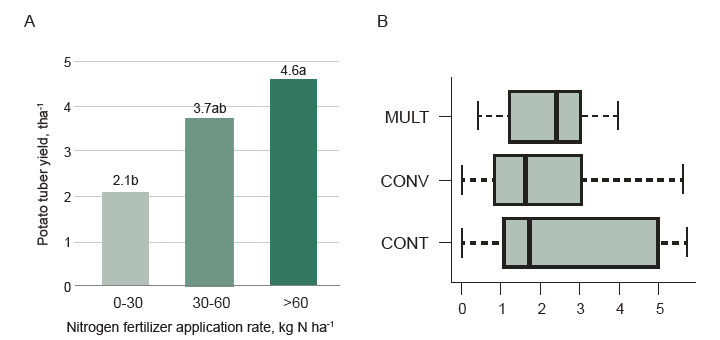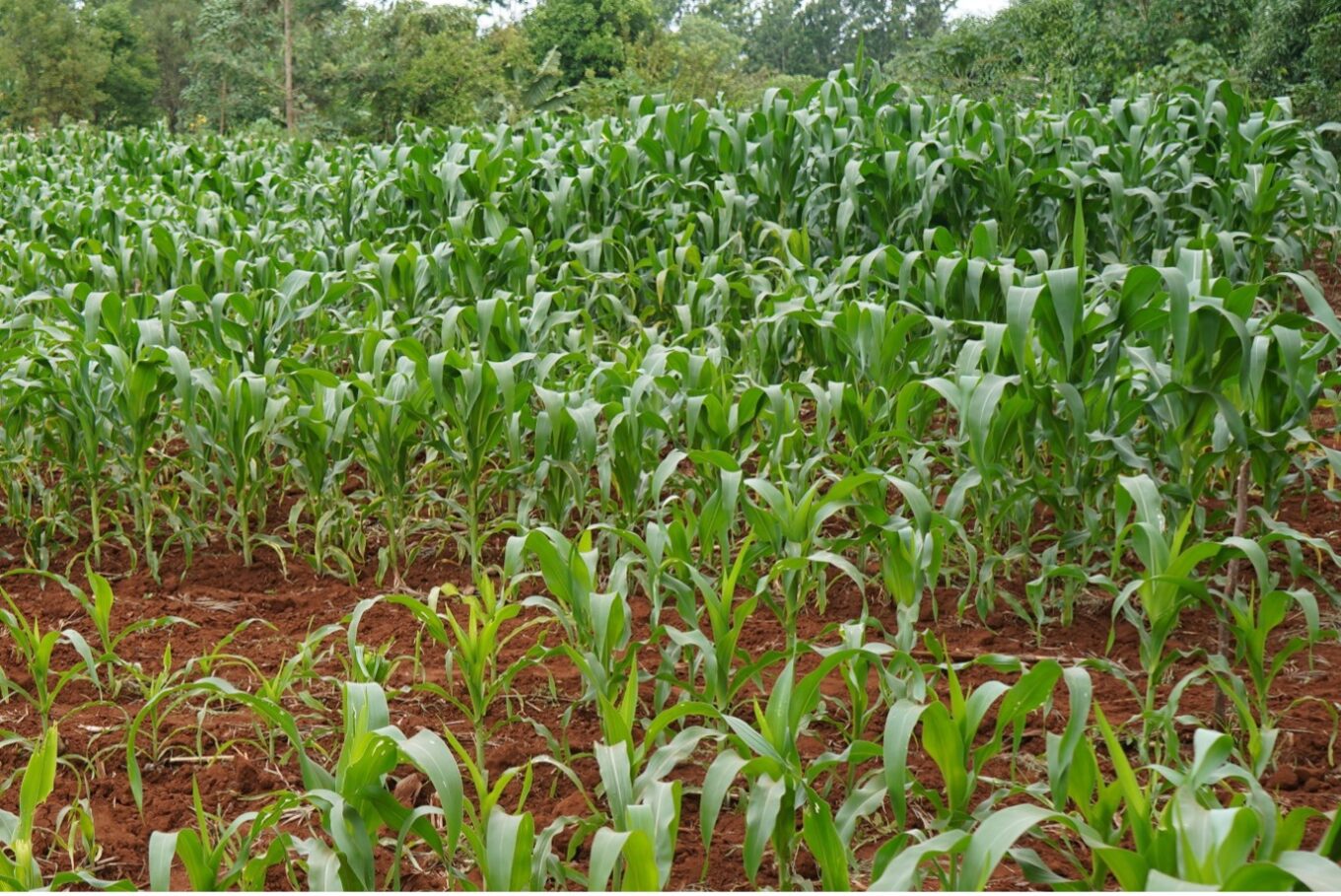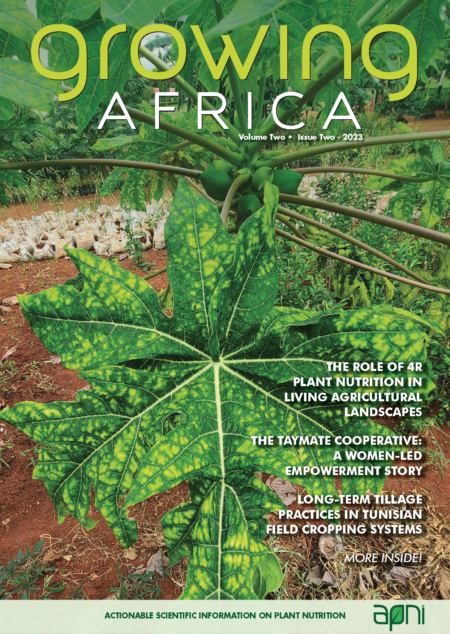By Gavin Sulewski and Ivan S. Adolwa
Despite the documented advantages to multi-nutrient fertilizer application their use remains low across smallholder cropping systems in Kenya. A better understanding of the key influences that foster (and restrict) their use can chart a path for new ways to encourage innovation on-farm.
A host of important advantages are linked to the use of multi-nutrient fertilizers in Africa. Formulated and applied correctly, they go beyond the supply of nitrogen (N), phosphorus (P), and potassium (K) provided by conventional fertilizers, and they can begin to address the secondary and micronutrient deficiencies that are commonly left unmanaged in Africa’s soils and contribute to poor crop productivity. Plus, their sustained use is known to enhance the quality of harvested crop products that help to generate the additional nutrient stocks needed to tackle diet related disorders and diseases, particularly in the most vulnerable, resource-poor rural areas.

However, there have been longstanding barriers to even the use of more conventional NPK fertilizers in Africa. These include those obstacles that shock regional supply chains with product unaffordability and unavailability. A lack of confidence in fertilizer effectiveness is another factor affecting use as farmers struggle with how best to manage nutrients in variable field landscapes and fluctuating climates.
Multi-nutrient fertilizers face greater challenges due to their relative newness in the market, higher costs, general unfamiliarity, and lack of agronomic support.
A research team in Kenya provides a pertinent case study example on multi-nutrient fertilizer adoption, the subject of this article, through an assessment of the extent of their use in the country, and factors that are influencing their impact. Adolwa et al. (2023) studied the impact of local productive potential, household demographics and resource endowment, and accessibility to extension-based learning on conventional versus multi-nutrient fertilizer use. To gauge effectiveness, the group collected information on crop yields and profitability associated with fertilizer use for maize, potato and bean crops grown across selected counties in agro-ecological zones (AEZs) classified as having low, medium, or high productivity potential (Fig. 1). The study included over 1,000 smallholder farmer respondents from 8 counties including those participating (and not participating) within an ongoing on-farm demonstration network designed by the African Plant Nutrition Institute to inform farmers and extension officers about best management practices implemented by a unique system of participatory research and training. Researchers were interested in the range of crop yield responses, as well as the corresponding profitability, to blended multi-nutrient fertilizers in these smallholder farming systems.

Data found that most fields (89%) within high yield potential areas received regular applications of conventional NPK fertilizer types, but only 11% of fields received multi-nutrient fertilizer. By comparison, low potential AEZs were far less fertilized with 45% of fields receiving NPK sources and just over 1% having a history of a multi-nutrient fertilizer application. It was apparent that most fields, regardless of their AEZ, could not be considered as having adequate soil fertility status.
The study also found food security to vary significantly (i.e., 16% to 98% of households considered themselves food secure across the 8 counties surveyed), but food security was lowest amongst low AEZ counties. Regardless, food insecurity was commonplace in spite of AEZ classification since data from 4 out of 8 counties showed that >50% of surveyed households were food insecure.
Where applied in maize, and despite their infrequent use, researchers detected significantly higher grain yield with multi-nutrient fertilizers compared to unfertilized controls (Fig. 2). Multi-nutrient fertilizers were particularly effective in AEZs with high yield potential (i.e., 108% greater yields compared to conventional NPK fertilizer).

Profitability for multi-nutrient fertilizers in maize was found to be breakeven at best, however, there is potential for this situation to change given more experience amongst farmers and the right kind of extension interactions and interventions that can encourage success. An example of this is highlighted from the potato cropping data where NPK fertilizer was found most effective in high yielding AEZs compared to crops receiving multi-nutrient sources (Fig. 3). However, a closer look revealed that the underperformance of multi-nutrient fertilizers was most likely an artifact of a general lack of understanding by farmers of how best to use these less familiar and under supported products. For example, the authors point out cases where “responses to multi-nutrient fertilizers may have been masked by the fact that farmers tend to replace conventional fertilizers with multi-nutrient fertilizers on a bag-to-bag basis, when it was evident that the latter had lower basal N content per bag.” In fact, data showed that in cases where multi-nutrient sources provided potato crops with more N, greater than 30 kg/ ha, this yield barrier was lifted, and the comparative advantage of multi-nutrient fertilizers became evident even in terms of profitability. In bean crops, data was characterized as inconclusive for this study; however, yield advantages were found for farmers situated in the low-yielding AEZs.

Key characteristics that had a positive influence on multi-nutrient fertilizer adoption reflected dominant gender roles such as male household leadership, household dynamics leading to fewer adult members, and smaller livestock herds generating smaller stockpiles of farmyard manure. Important comparative advantages include location (i.e., being situated within zones of higher productivity potential), higher monthly expenditures with better access to credit, increased access to nutrition-based information, and higher food security status. Interestingly, the influence of past efforts to improve fertilizer use through past methods of technology transfer and extension came across as not being a significant influence amongst the farmers included in the study.
Going forward, similar assessments undergirded by farmer-centric experimentation need to be encouraged for in-depth understanding of the underlying factors behind adoption of multi-nutrient and conventional fertilizers and their contributions towards food and nutrition security in Kenya.
In relation to this last key point, the authors closed their analysis by strongly emphasizing that future efforts for capacity building through identifying and evaluating fertilizer technologies and management innovations, like the inclusion of multi-nutrient fertilizers, need to solidly secure the engagement of farmers to establish an iterative cycle of participatory learning, feedback, and progressively building upon the knowledge gained.
Acknowledgment
This summary was extracted from the article published by I.S. Adolwa, J. Mutegi, J. Muthamia, A. Gitonga, S. Njoroge, A. Kiwia, D. Manoti, F.S. Mairura, E.B. Nchanji. 2023. Enhancing sustainable agri-food systems using multi-nutrient fertilizers in Kenyan smallholder farming systems. Heliyon 9, e15320. https://doi.org/10.1016/j.heliyon.2023.e15320
Mr. Sulewski (e-mail: g.sulewski@apni.net) is APNI Senior Editor & Communications Manager. Dr. Adolwa is APNI Scientist, Nairobi, Kenya.
Cite this article
Sulewski, G., Adolwa, I. 2023. The Use and Impact of Multi-Nutrient Fertilizers in Kenyan Smallholder Cropping Systems, Growing Africa 2(1), 28-31. https://doi.org/10.55693/ga21.EDOQ6802





